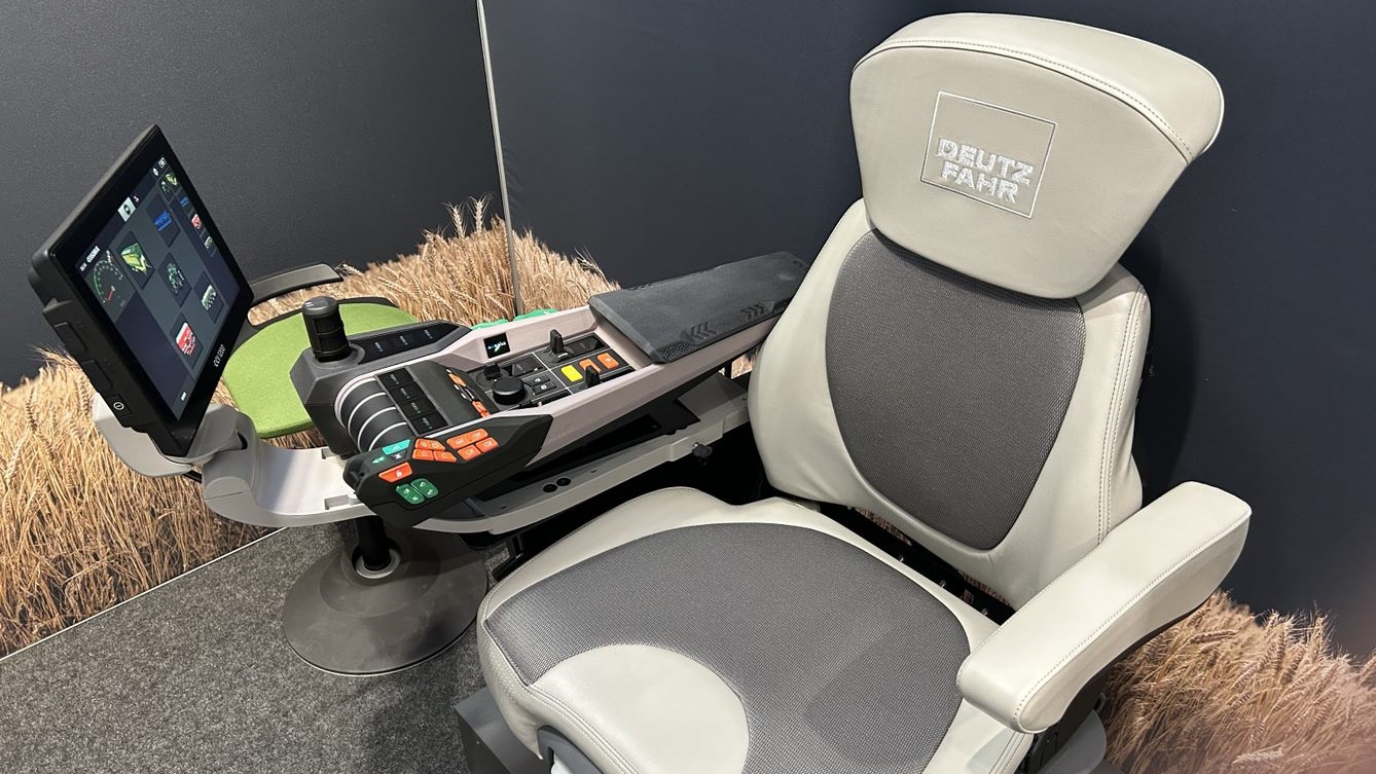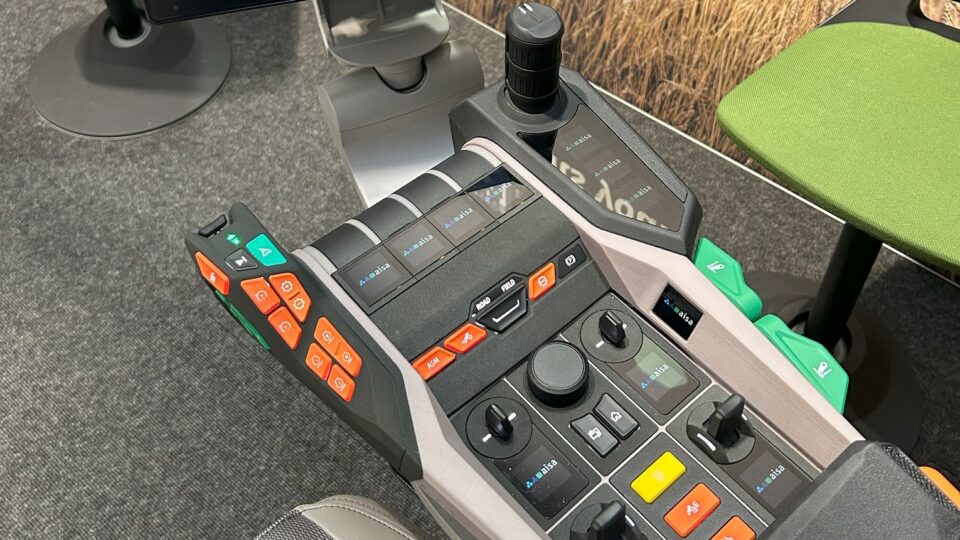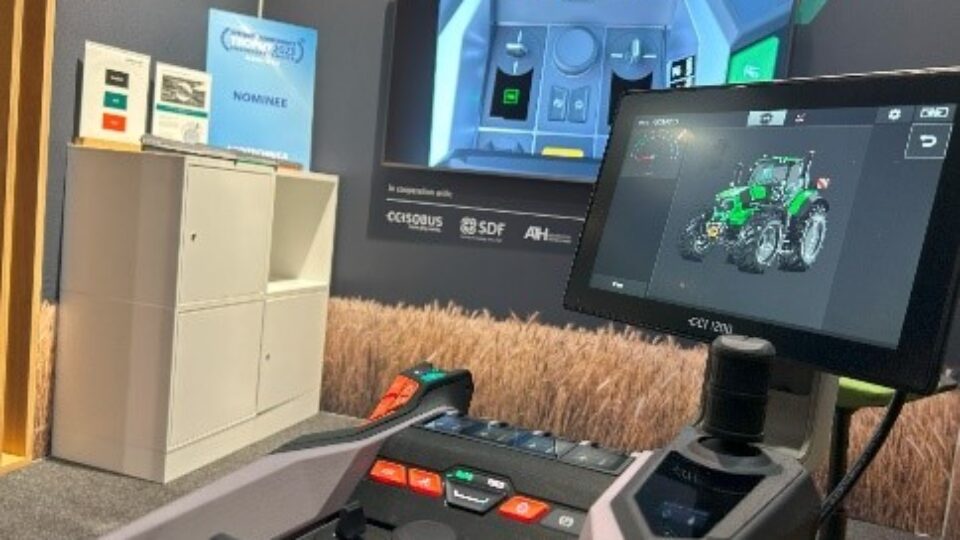

At this year’s Agritechnica, the adaptive armrest was presented to an international audience for the first time at the elobau booth in a completely new design and with many new adaptive features as part of the aISA system 2.0. The response was very positive. The advantages of the innovative armrest speak for themselves: the aISA system enables a new level of user-friendliness by allowing the implement (aISA Client) to configure the multifunctional armrest (aISA HMI) in the tractor according to the needs of the implement operator. The operating requirements are predefined by the implement manufacturer, transmitted to the tractor, and the algorithm on the aISA server sets the aISA HMI to an optimized configuration.
This means that the armrest adapts to any implement as soon as it is connected and provides the user with an ergonomic interface that matches the implement. For the first time, an implement in a tractor can configure haptic controls on a multifunctional armrest. These adaptive controls can display function-specific icons and lighting, they can be hidden if they are not assigned to a function or they can also change their basic position to ensure movement compatibility with the controlled part of the implement (e.g. the pick-up is controlled up/down). It is also possible to change their operating characteristics (e.g. several AUX-N types on one control element). In addition, the aISA system assigns functions that are predefined with a high frequency of use to the control elements with a high ergonomic value.
The communication of the aISA system is based on the ISOBUS standard with extensions for communication between the aISA elements client, HMI and server. The coordination between the needs of the aISA client and the resources of the aISA HMI takes place without the driver using an algorithm when the client is connected to the tractor. If necessary, the function assignment of the algorithm can be changed by the driver.
A top-class team of experts and supporters is behind the development of the aISA system. The project consortium in the follow-up project aISA 2.0 consists of five members: The research and teaching area of Technical Design at the Institute for Construction Technology and Technical Design (IKTD) at the University of Stuttgart took on the coordination. The IKTD had already worked on the predecessor project (aISA) together with the Institute of Agricultural Engineering at the University of Hohenheim (ATH) and the company elobau. They were also supported in the aISA 2.0 project by the Competence Center ISOBUS e.V. association from Osnabrück and the tractor manufacturer Same Deutz-Fahr. The project sponsor is the Federal Office for Agriculture and Food (BLE). The project was funded by the federal government’s special-purpose assets at the Landwirtschaftliche Rentenbank and the Innovation Fund.
In an expert interview with Timo Schempp, Head of Pre-Development at elobau and aISA project manager, we had him explain to us in person what makes the aISA System 2.0 so special and how it differs from the previous aISA 1.0 project.




Comments
write a comment